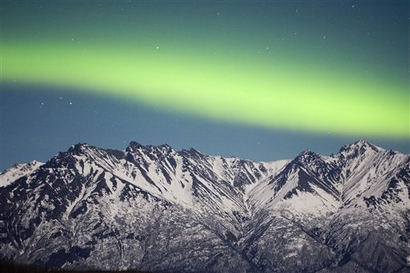HELSINKI (AFP) – The Northern Lights have petered out during the second half of this decade, becoming rarer than at any other time in more than a century, the Finnish Meteorological Institute said Tuesday.
The Northern Lights, or aurora borealis, generally follow an 11-year "solar cycle", in which the frequency of the phenomena rises to a maximum and then tapers off into a minimum and then repeats the cycle.
"The solar minimum was officially in 2008, but this minimum has been going on and on and on," researcher Noora Partamies told AFP.
"Only in the past half a year have we seen more activity, but we don't really know whether we're coming out of this minimum," she added.
The Northern Lights, a blaze of coloured patterns in the northern skies, are triggered by solar winds crashing into the earth and being drawn to the magnetic poles, wreaking havoc on electrons in the parts of the atmosphere known as the ionosphere and magnetosphere.
So a dimming of the Northern Lights is a signal that activity on the sun which causes solar winds, such as solar flares and sun sports, is also quieting down.For researchers like Partamies, it is the first time they can observe through a network of modern observation stations what happens to this solar cycle when it becomes as badly disrupted as it is now.
"We're waiting to see what happens, is the next maximum going to be on time, is it going to be late, is it going to be huge?" Partamies said.
During the cycle's peak in 2003, the station on Norway's Svalbard island near the North Pole, showed that the Northern Lights were visible almost every single night of the auroral season, which excludes the nightless summer months.
That figure has fallen to less than 50y percent, while the southernmost station, situated in southern Finland, has been registering only two to five instances annually for the past few years.



Tidak ada komentar:
Posting Komentar